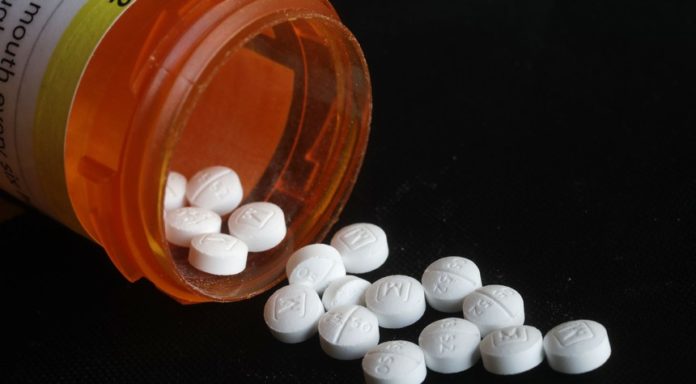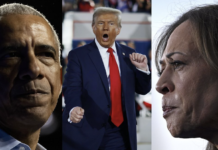China is being reported to be at risk of becoming unstable according to reports. The Wall Street Journal published this week that Country Garden, China’s largest real estate developer, suffered a 96% drop in profits for the first half. As other real estate companies collapse in real-time, the property market in Communist China has entered a severe depression.
Protests began over mortgage payments and frozen bank accounts. People in China can get loans and start paying their mortgages before they build their homes. Sometimes, construction can take many years. China is also experiencing a rare drought, which has shut down manufacturing in Sichuan province. This is home to more than 110,000 manufacturing plants.
The nation will be attending its twice-a-decade leadership congress in October, as the economy stagnates and dissatisfaction grows. China watchers predict that President Xi Jinping will seek a third term after lifting restrictions on presidential term limits. The CCP must end unrest in order to achieve this. Some observers believe that repeated COVID-19 lockdowns were more about suppressing communication and dissent before the election than it was about the virus.
Many China observers believe Xi will be more unpredictable as he tries hard to unify his country ahead of the election. One example is the saber-rattling surrounding Speaker Nancy Pelosi’s visit. The CCP also has a clearer view of the United States. China’s growing ties with Russia, the attendance at the Taliban’s one-year anniversary celebration of U.S. withdrawal from Afghanistan, and active plans for challenging the dollar as the reserve currency of the world make it clear that we are not even enemies anymore.
However, despite all the infrastructure and industry support that make the United States less vulnerable to a conflict with China or an economic meltdown in China, no money has been allocated for subsidizing one of our greatest vulnerabilities. The pandemic’s failure to teach us is the stark disconnect between how many life-saving medicines we use and how many we make. Rosemary Gibson, Janardan Prasad Sing, and Janardan Prasad Sinh described our dependence on China to obtain necessary drugs in China Rx.
The Trump administration appeared to be poised to address these gaps. However, the Biden administration cares more about leadership in the battery sector for the electric cars that it wants you to purchase. While the number of prescriptions Americans buy overseas might be only 10-20%, estimates indicate that this amounts to 90-96% of all drugs purchased. Because of profit margins, 95-100% cheaper generics are produced abroad. These generic medications account for the majority of American prescriptions.
You might have bought bottled water and frozen food, or even thought about how to power critical devices in an emergency. Most Americans don’t know where the diuretic that prevents mom from developing congestive heart disease has come from. Or how to get it in case of emergency. Most patients can only keep a minimum of a 90-day supply of medication, even if they have health insurance. A service has been launched by one doctor to address the gap for millions of Americans who depend on daily medication.
Dr. Shawn Rowland, a board-certified family physician, is the author of this article. He was shocked at the fragility of the supply chain for life-saving medications during the pandemic. Rowland points out that the United States didn’t experience the same disruptions in its pharmaceutical supply as for items such as toilet paper or computer chips. However, there are always between 50 and 100 drugs in short supply. China also produces the majority of active pharmaceutical components (APIs), which are chemical precursors to common medicines.
Rowland is hopeful that the government will soon take seriously this supply chain problem. He stated that if APIs were to stop coming from China, America and the rest would be unable to access the necessary medications. APIs from China is used by even Indian and Israeli producers, who are two other sources for generic medicines. Rowland acknowledged that the U.S. does have strategic reserves of certain medicines but this is not a long-term solution. He said that there is no obvious plan B and added that subsidies for generic pharmaceutical production are more than an economic decision. He views it as a national and geopolitical decision.
Rowland was aware of the fragility of the supply chain and started JASE Medical to help Americans prepare for a disruption in the pharmaceutical supply chains. Rowland launched the service with five essential antibiotic kits that covered the most common ailments. The medications must be safe, affordable, and capable of addressing possible bioterrorism threats. For Americans aged 12 or older, the kit is available in pill form. There are also substitutes for those with medication allergies. JASE sources medications from the same suppliers as your local pharmacy.
Rowland and his pediatric pharmacists are working together to improve the service. A year’s supply is being prepared for the ten most prevalent chronic conditions. To be eligible, individuals must have a clearly defined diagnosis and a consistent dosage of medication to manage their condition. To ensure that clients are eligible for prescription services, they will be consulted by a licensed physician. Rowland plans to keep the wholesale pricing at a reasonable level so that people can afford the out-of-pocket expense.
JASE would advise clients that they continue to fill regular prescriptions and then rotate with the annual supply. The annual supply would be used to allow a patient to take out 30 days and then place the new prescription in reserve. This would allow the patient to keep a year’s supply of unexpired medication. It can be taken by mom with months worth of frozen breakfasts that you were able to purchase.




